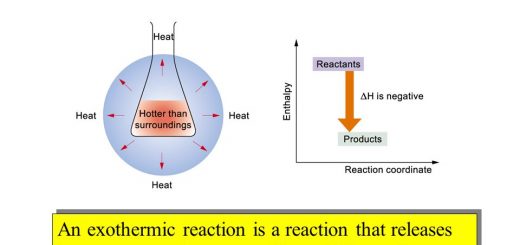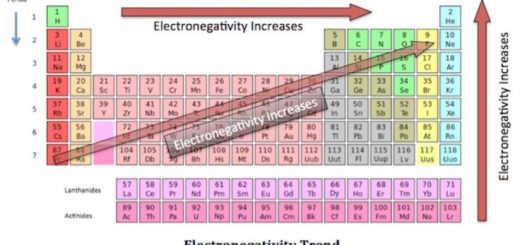Nitric acid properties, Passivity phenomenon and Economic importance of the 5A group elements
Nitric acid is colorless liquid, It turns to red color when adding a few drops of litmus solution, Strong oxidizing agent – especially concentrated acid – and this is illustrated from the action of heat on it, Its action on metals and passivity phenomenon.
Preparation of nitric acid in the lab
Put potassium nitrate and concentrated sulphuric acid in the glass retort and the receiver in a trough containing cold water, Heat the contents of the retort gently, but not to exceed the temperature of 100° C, Collect the acid formed in the receiver.
2KNO3 (s) + H2SO4 (l) → K2SO4 (aq) + 2HNO3 (l)
The action of heat on nitric acid
It decomposes by heat giving brown fumes of nitrogen dioxide (NO2), It is a strong oxidizing agent because oxygen gas evolves as a result of its thermal decomposition.
4HNO3 (l) → 2H2O (v) + 4NO2 (aq)+ O2 (g) ↑
The action of the acid on metals
Nitric acid reacts with metals as an oxidizing agent and this is illustrated from the following:
The chemical reaction: Nitric acid reacts with metals above hydrogen in the electrochemical series, giving metal nitrate and the atomic hydrogen which reduces the acid forming nitric oxide gas NO and water.
The diluted nitric acid reacts with iron, forming iron (III) nitrate and liberating nitric oxide gas (colorless) which turns into a reddish brown color at the top of the tube.
4HNO3 (aq) + Fe (s) → Fe(NO3)3 (aq) + 2H2O (l) + NO (g) ↑
Nitric acid reacts with metals below hydrogen in the electrochemical series because it is a strong oxidizing agent which oxidizes the metal forming a basic oxide, which reacts with acid forming the acid salt & water, The type of the produced gas differs according to the concentration of acid.
The diluted nitric acid reacts with copper and nitric oxide gas evolves.
8HNO3 (aq) + 3Cu (s) → 3Cu(NO3)2 (aq) + 4H2O (l) + 2NO (g)
When the conc. nitric acid is added to copper, brown vapors of nitrogen dioxide gas are formed and copper ions Cu2+ from green color in the solution.
4HNO3 (aq) + Cu (s) → Cu(NO3)2 (aq) + 2H2O (l) + 2NO2 (g)
Passivity phenomenon
The conc. nitric acid does not affect some metals such as (iron, chromium & aluminum), due to the oxidizing property of the acid, a non-porous layer of the metal oxide is formed which protects the metal from a further reaction, what is known as passivity.
Passivity phenomenon: A non-porous layer of oxide is formed on the surface of some metals which protects them from further reaction with acids or atmospheric air.
Detection of nitrate ion NO3 − (the brown ring experiment)
Add nitrate salt solution to a freshly prepared conc. solution of iron (II) sulphate in a test tube, Add carefully on the internal wall of the tube a few drops of conc. sulphuric acid.
Observation: A brown ring appears at the interface and disappears by shaking or heating.
4H2SO4 (l) + 2NaNO3 (aq) + 6FeSO4 (aq) → 2NO (g) + Na2SO4 (aq)+ 4H2O (l) + 3 Fe2(SO4)3 (aq)
NO (g) + FeSO4 (aq) → FeSO4.No (s) Brown ring compound
Differentiation between nitrite and nitrate salts
To differentiate between nitrite and nitrate salts, add to each solution of them a solution of potassium permanganate acidified with concentrated sulphuric acid, if:
- The violet color of the permanganate disappears, the salt is nitrite.
- The violet color of the permanganate does not disappear, the salt is nitrate.
3H2SO4 (l) + 2KNO2 (aq) + 2KMnO4 (aq) → 5KNO3 (aq) + K2SO4 (aq)+ 3 H2O (l) + 2MnSO4 (aq)
The economic importance of the 5A group elements
Nitrogen
Nitrogen gas is used in manufacturing ammonia gas, It is used in manufacturing nitrogenous fertilizers, It is used in filling of car tires, Because nitrogen reduced the probability of their explosion, as nitrogen is not affected easily by changing of the temperature, in addition to its leakage rate is less than that of air.
Nitrogen gas is used in filling chips packaging bags, To keep potato’s slices crunchy, because it is relatively inactive, Liquified nitrogen is used in preserving and transferring the living cells, It is used in treating some banging tumors.
Phosphorus
Phosphorus is used in the manufacture of matches, fireworks, phosphorus fertilizers, Many alloys such as phosphorus-bronze alloy (Cu + Sn + P), which is used in the manufacture of pushing fans in ships.
Arsenic
Arsenic is used as a preservative substance for wood, Due to its poisonous effect on insects, bacteria & fungi, It is used in preparing of arsenic trioxide compound, which is used in the treatment of blood cancer (Leukemia), Transferring arsenic and its compounds is very dangerous because it is a very toxic element.
Antimony
Antimony is used in the manufacture of lead-antimonal alloy which is used in the acidified car batteries because it is harder than lead, It is used in the manufacture of semiconductors technology which is used in manufacturing instruments of detecting the infrared rays (IR).
Bismuth
Bismuth is used in manufacturing bismuth, lead and cadmium alloys, which are used in manufacturing electric fuses due to its low melting point.
The most famous elements in 5A group (Nitrogen properties, Preparation & compounds)



